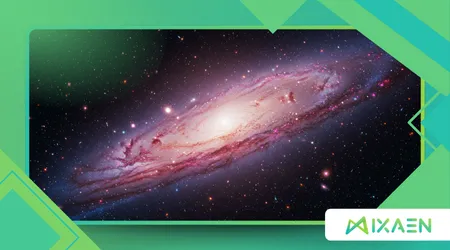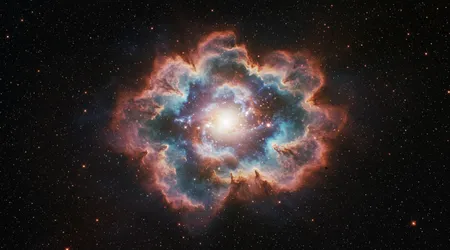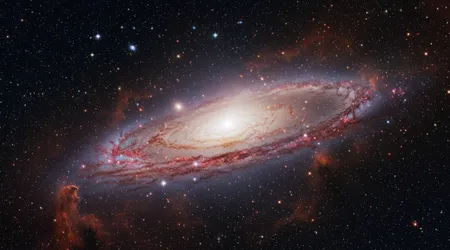Can the Universe Be a Living Being?

Theoretical and Philosophical Universe Phenomena intrigue thinkers who ponder if cosmic vastness holds life-like qualities.
Anúncios
Imagine gazing at the night sky, wondering if those distant galaxies pulse with some form of awareness. This question stretches back centuries, blending science with deep reflection.
Recent discoveries in 2025 push boundaries further, challenging us to rethink reality itself. Scientists explore quantum links to consciousness, while philosophers debate panpsychism’s revival.
We dive into arguments, evidence, and implications, drawing from current insights. What draws you to this cosmic riddle? Let’s unpack it step by step, blending facts with thoughtful inquiry.
Explorations into the universe’s potential sentience spark lively debates among experts. Panpsychism suggests consciousness infuses all matter, from quarks to quasars. This idea, once fringe, gains traction in 2025 discussions.
Philip Goff, a leading philosopher, argues consciousness forms reality’s base. His work emphasizes panpsychism’s role in solving mind-body puzzles actively.
Yet skeptics demand empirical proof beyond speculation. They point to neuroscience, where brain activity explains awareness without cosmic extension.
The Roots of the Idea
Ancient thinkers first floated notions of a living cosmos. Plato described the universe as a single, animated entity driven by soul.
Indigenous cultures often view nature as alive, with spirits in stars and stones. These perspectives echo modern theoretical and philosophical universe phenomena.
Historians trace panpsychism to Thales, who claimed all things possess gods. This foundational view influences today’s debates vividly.
Over time, mechanistic science sidelined such ideas. Newton’s laws portrayed a clockwork universe, devoid of inherent life.
Romantic philosophers revived the concept. Schelling envisioned nature as a dynamic, self-organizing whole pulsating with vitality.
++ What If We Are the Universe Observing Itself?
These historical threads weave into current dialogues. They remind us ideas evolve, adapting to new evidence dynamically.
Add depth by considering Eastern philosophies. Taoism sees the universe as a flowing, conscious process interconnecting all existence.
Western mysticism, like Spinoza’s pantheism, equates God with nature. This blurs lines between divine and material realms actively.
Cultural narratives shape our views too. Myths portray skies as breathing entities, inspiring scientific curiosity today.

Scientific Perspectives
Physicists probe if quantum mechanics hints at universal consciousness. Entanglement suggests interconnectedness beyond classical limits.
Roger Penrose and Stuart Hameroff propose microtubules enable quantum computations in brains, possibly extending universally.
A 2025 study links consciousness to quantum processes, connecting individual minds to cosmic scales intriguingly.
Critics argue quantum effects decohere too quickly in warm, wet brains. They favor classical explanations for awareness.
Also read: The Role of Observer in Quantum Mechanics
Assembly theory, proposed in 2025, suggests life assembles via complexity thresholds, applicable to cosmic structures.
This framework views the universe as building intricate patterns, akin to biological evolution on grand scales.
NASA data reveals the universe’s expansion accelerated nine billion years after its birth, driven by dark energy. That’s our statistic highlighting dynamic cosmic behavior.
Such acceleration implies an evolving system, perhaps responsive to internal forces like a growing organism.
Researchers use telescopes to map cosmic webs. These filament structures resemble neural networks, sparking analogies.
Quantum field theory treats particles as excitations in fields pervading space. This unified view supports panpsychist interpretations actively.
Philosophical Angles
Philosophers question materialism’s limits. David Chalmers highlights the “hard problem” of why experiences arise from matter.
Panpsychism resolves this by positing consciousness as fundamental, not emergent from complexity alone.
Critics like Daniel Dennett dismiss it as unnecessary. They see consciousness as illusory, explained by functions.
Yet theoretical and philosophical universe phenomena demand we consider alternatives. Panpsychism offers elegant solutions to integration issues.
Ethical implications arise if the universe lives. Environmentalism extends to cosmic stewardship, urging careful exploration.
Read more: The Fermi Paradox: Where Are All the Aliens?
Free will debates intensify too. A conscious cosmos might influence choices subtly, reshaping determinism.
Consider subjectivity’s role. If atoms feel, then aggregates like us amplify basic experiences creatively.
This shifts anthropocentrism. Humans become participants in a vast, aware tapestry, not isolated observers.
Dialogues between science and philosophy enrich understanding. They bridge gaps, fostering innovative hypotheses actively.
Modern Evidence and Theories
2025 brings fresh insights from quantum experiments. Tests on consciousness theories pit integrated information against global workspace.
Neither wins decisively, leaving room for panpsychist extensions in cosmology. A paper suggests microtubules harbor quantum phenomena, linking brains to universal fields. This reference grounds our discussion.
Dark matter theories propose mirror worlds, potentially hosting conscious entities invisibly.
Cosmic microwave background analyses reveal fine-tuned constants. Slight changes would preclude life, hinting at design.
Skeptics attribute this to multiverse hypotheses. Infinite universes ensure one like ours exists naturally. Yet fine-tuning puzzles persist. It fuels arguments for a purposeful, living cosmos actively.
AI simulations model conscious emergence. They test if simple rules yield awareness in virtual universes.
These tools probe theoretical and philosophical universe phenomena empirically. Results suggest scalability from micro to macro. Interdisciplinary teams collaborate now. Neuroscientists join cosmologists, blending fields innovatively.
Implications for Humanity
If the universe lives, our place shifts dramatically. We become cells in a cosmic body, interdependent. This fosters humility. Exploiting resources harms the whole, echoing ecological warnings urgently.
Spirituality evolves too. Religions might reinterpret deities as universal consciousness manifesting diversely.
Technological pursuits change. Space travel respects potential sentience in celestial bodies carefully.
Education incorporates these ideas. Curricula teach theoretical and philosophical universe phenomena to inspire wonder.
Socially, it promotes unity. Recognizing shared awareness bridges divides among people actively.
Imagine daily life infused with cosmic connection. Meditations attune to stellar rhythms, enhancing well-being.
Challenges arise in verification. How do we test universal consciousness without direct access? This drives innovation. New instruments detect subtle quantum signatures across vast distances.
Ultimately, it redefines existence. Life gains deeper meaning within an aware, evolving universe.
Exploring Analogies and Examples

Picture the universe as a colossal brain. Galaxies form neurons, black holes synapses, firing thoughts across eons. This analogy illustrates interconnected theoretical and philosophical universe phenomena.
For an original example, consider a cosmic garden. Stars seed planets like flowers, nurturing life through gravitational embraces dynamically.
Another example: envision the Big Bang as a heartbeat. Expansion pulses rhythmically, sustaining existence’s flow eternally.
These visuals humanize abstract concepts. They make distant ideas tangible and engaging. What if the cosmos dreams through us? This rhetorical question invites personal reflection on our role.
Practical applications emerge. Astronomers study pulsar rhythms as potential signals of universal “breathing.”
Biologists draw parallels with ecosystems. The universe self-regulates, balancing forces like a living habitat. Such crossovers enrich research. They spark hypotheses testable with current tech.
Key Cosmological Insights
To grasp the universe’s properties, examine core parameters. These constants shape its behavior profoundly.
Here’s a table summarizing essential cosmological values, drawn from established data:
| Parameter | Value | Description |
|---|---|---|
| Hubble Constant (H0) | ~70 km/s/Mpc | Measures expansion rate. |
| Matter Density (Ωm) | ~0.3 | Fraction of total energy in matter. |
| Dark Energy Density (ΩΛ) | ~0.7 | Drives acceleration. |
| Age of Universe | ~13.8 billion years | Time since Big Bang. |
| Critical Density (ρc) | ~8.6 × 10^{-27} kg/m³ | Threshold for flat geometry. |
This table highlights the fine balance enabling potential life-like traits. Scientists update these via telescopes like James Webb. 2025 observations refine values further.
Understanding them aids arguments for a responsive cosmos. They reveal a tuned system actively. Debates continue on interpretations. Some see randomness; others, inherent intelligence.
Conclusion
Pondering if the universe lives transforms our worldview profoundly. It blends theoretical and philosophical universe phenomena with cutting-edge science seamlessly.
From ancient roots to 2025 quantum leaps, evidence mounts intriguingly. We’ve explored roots, science, philosophy, modern theories, implications, and vivid examples.
The analogy of a brain-like cosmos, coupled with original scenarios like a pulsing garden or heartbeat, brings ideas alive. That statistic on acceleration underscores dynamism.
The table of parameters grounds us in facts. Philip Goff’s insights, alongside quantum studies, provide solid references. Challenges remain, but the quest enriches humanity.
As we peer deeper into space, perhaps the universe gazes back. This notion inspires awe, urging ethical stewardship. What discoveries await in coming years?
Embrace the mystery; it fuels progress. Let’s keep questioning, exploring, and connecting with the cosmos around us.
Frequently Asked Questions
What is panpsychism?
Panpsychism posits that consciousness exists in all matter, from particles to planets, as a fundamental property.
Is there scientific proof for a living universe?
No definitive proof exists, but 2025 quantum consciousness studies and cosmic fine-tuning offer intriguing hints.
How does this idea affect daily life?
It encourages mindfulness, seeing ourselves as part of a larger, aware system, promoting unity and care.
Can AI help explore this?
Yes, simulations model consciousness emergence, testing theories in virtual cosmic environments effectively.
What books dive deeper?
Try Philip Goff’s “Galileo’s Error” for panpsychism basics, or Roger Penrose’s works on quantum mind.
